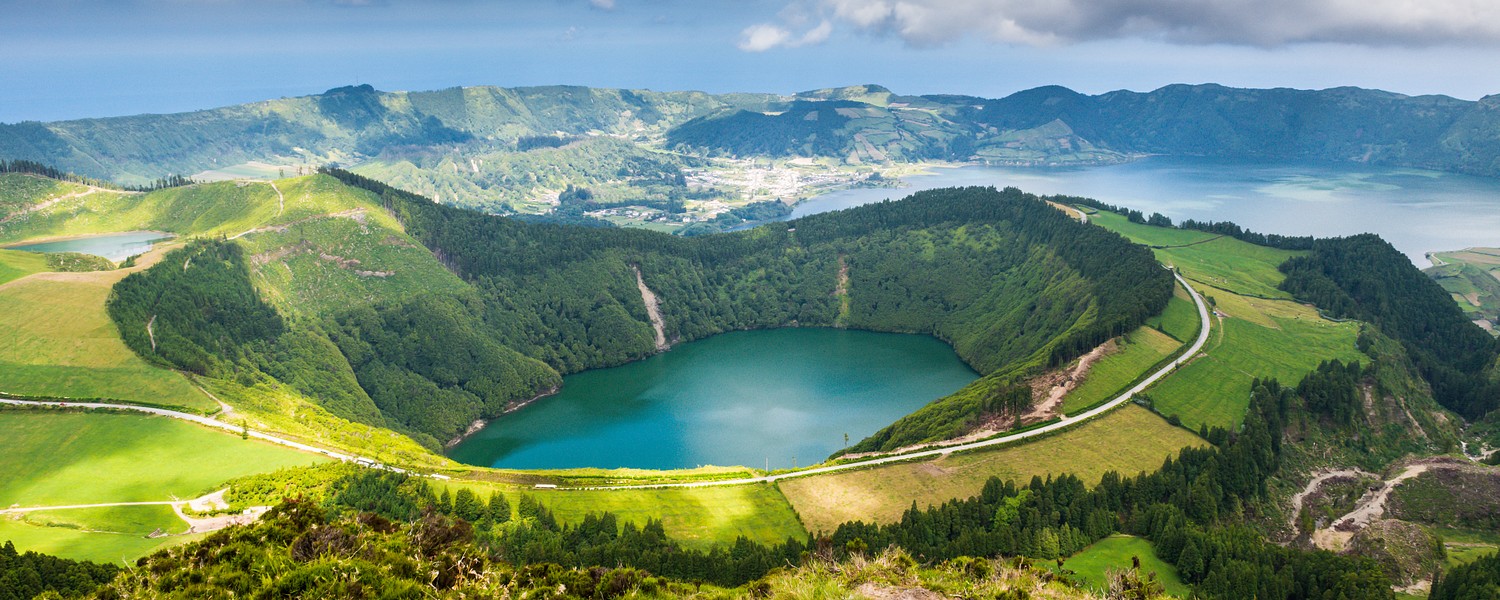
Provided by:
Vicky SP/shutterstock

Our travel guides are free to read and explore online. If you want to get your own copy, the full travel guide for this destination is available to you offline* to bring along anywhere or print for your trip.
*this will be downloaded as a PDF.Price
€4,95
The Islands
The guide was updated:
One of the best sentences that describe the Azores is: One Location, Nine Unique Worlds.
The nine islands of the Azores archipelago represent Europe’s most westernmost point, and are located in the middle of the Atlantic Ocean.
Each of the islands has its own specific landscape and character, and the Azorean people follow age-old traditions complemented by the diversity of their beautiful surroundings.
São Miguel, the largest island is renowned for its flowers and green landscapes, its large scenic lakes, and the vibrant city of Ponta Delgada. On the Island of Santa Maria, you’ll discover vine-covered escarpments surrounding the site of the Anjos chapel of Baía de São Lourenço, where Columbus prayed on his return from America.
At the centre of the Azores, five islands lie very close together. Terceira Island is steeped in history, as the home of Angra do Heroísmo, the first European city in the Atlantic and now a UNESCO World Heritage Site. Nearby, Faial Island is famed for its blue hydrangeas and its marina painted in colours of visiting yachts from all over the world. Opposite Faial is Pico, with the highest mountain of Portugal at 2351m. Its slopes are covered with black lava fields and vineyards, and its people remember age-old whaling traditions. Wide green pastures dominate the island of São Jorge, while at the base of its steep escarpments, slivers of land called “fajãs” nestle by the sea. The smallest of this central group of five islands is Graciosa, which has a lake carved in dormant volcanic rock, while its vineyards are dotted with windmills.
The island of Flores resembles a garden surrounded by the sea. Its charming scenery is made up of scenic lakes carved into the volcanic rock. The centre of the miniature ninth island of Corvo also has its own volcanic crater, or “caldeira”, which takes up much of its centre.
The nine islands of the Azores archipelago represent Europe’s most westernmost point, and are located in the middle of the Atlantic Ocean.
Each of the islands has its own specific landscape and character, and the Azorean people follow age-old traditions complemented by the diversity of their beautiful surroundings.
São Miguel, the largest island is renowned for its flowers and green landscapes, its large scenic lakes, and the vibrant city of Ponta Delgada. On the Island of Santa Maria, you’ll discover vine-covered escarpments surrounding the site of the Anjos chapel of Baía de São Lourenço, where Columbus prayed on his return from America.
At the centre of the Azores, five islands lie very close together. Terceira Island is steeped in history, as the home of Angra do Heroísmo, the first European city in the Atlantic and now a UNESCO World Heritage Site. Nearby, Faial Island is famed for its blue hydrangeas and its marina painted in colours of visiting yachts from all over the world. Opposite Faial is Pico, with the highest mountain of Portugal at 2351m. Its slopes are covered with black lava fields and vineyards, and its people remember age-old whaling traditions. Wide green pastures dominate the island of São Jorge, while at the base of its steep escarpments, slivers of land called “fajãs” nestle by the sea. The smallest of this central group of five islands is Graciosa, which has a lake carved in dormant volcanic rock, while its vineyards are dotted with windmills.
The island of Flores resembles a garden surrounded by the sea. Its charming scenery is made up of scenic lakes carved into the volcanic rock. The centre of the miniature ninth island of Corvo also has its own volcanic crater, or “caldeira”, which takes up much of its centre.


